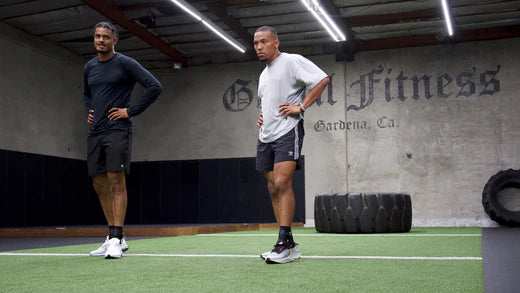Football is king in Germany, but sports such as handball, athletics and boxing are also popular in this country. This also applies to tennis . Encouraged by the successes of the former world stars Boris Becker and Steffi Graf as well as the current Olympic gold medalist Alexander Zverev, tennis has long since developed into one of the most popular sports in Germany. Interest is even greater in the USA, not least due to major tournaments such as the US Open and numerous world-class players such as Serena Williams, Chris Evert, Pete Sampras and many more.
Worldwide boom: almost 90 million people play tennis
In the meantime , more than 1.5 million tennis players are organized in the German Tennis Association (DTB). Almost 30 percent of the approximately 87 million players worldwide play in the USA. That's more than 26 million active players. China also has similar figures.
The game is played both indoors and outdoors. The courts are equipped with a variety of different surfaces . In addition to hard courts, sand, carpet or grass are mainly used as a surface. In the course of time, the systems around the world have become more and more modern.

Tennis injuries caused by severe strain on the musculoskeletal system
This also applies to the game itself. Technology and athletics have reached a whole new level in recent years. High service speeds, extremely fast rallies, stopping and stepping up in constant alternation, plus an almost whip-like backhand and powerful forehand shots - modern tennis places the highest demands on your musculoskeletal system, even in the hobby area .
This also increases the risk of injuries in tennis . The frequency and intensity of injuries as well as your personal risk of injury are influenced by various parameters.
On the one hand , your age, your physical constitution and your training or fitness level play a major role in this regard. On the other hand, external conditions, such as the floor covering and the temperatures on the pitch , also influence the respective risk of injury.
These are the most common tennis injuries :
- Hand and finger sprains
- Wrist injuries
- elbow injuries
- Wounds on shoulders and collarbone
- Injuries to the trunk and spine:
- knee pain and problems
- Injuries to the lower leg and thigh:
- Foot and ankle injuries
Tennis injuries most commonly affect the ankle
Jerky stopping and turning movements, sudden changes of direction and speed or, for example, reaching drop shots through short sprints almost from a standing start - the feet and especially the ankles have to do hard work in training and in matches. Accordingly, feet and ankles are often affected by tennis injuries .
Depending on the floor covering and the shoe technology used, the risk of injury varies by a few percentage points up or down. The so-called distortion injury of the upper ankle joint has emerged as the dominant injury in this area. According to statistics, injuries to the fibulotalar ligaments most often have to be treated, i.e. the classic ligament stretching or ligament tear .

Tennis: ankle bandage with innovative technology revolutionizes the treatment
If you have seriously injured your ankle playing tennis , there is usually a risk of a longer forced break. A torn ligament can sometimes take up to eight weeks or even longer to heal . With regard to both rehabilitation and prevention, for years the doctors have relied on optimal individual shoe and insole care as well as protection through tape and the application of bandages and orthoses. The big problem here is that conventional orthoses are stiff and severely restrict mobility, while bandages often provide insufficient stability. In addition, they often do not fit well in sports shoes and are therefore uncomfortable to wear. They can therefore not be used on the pitch at play, or only to a very limited extent.
Innovative bandage - the ankle in tennis as a beneficiary of new technology
The BetterGuard has been around since November 2022. The ankle bandage for tennis and many other sports is an absolute game changer. You benefit from a multi-patented technology that provides the necessary stability three times faster than a muscle . The sports bandage behaves like a compression stocking during sports and only stiffens within milliseconds during critical movements.
The ankle bandage then restores a completely flexible initial state just as quickly. This combination of fast, reliable protection and absolute freedom of movement makes the technologically unique ankle bandage a real ace in tennis - right from the first serve.
The two WTA tennis players Bojana Marinkovic & Anastasiya Kuparev show how well this works in practice. We are proud to have them both as ambassadors.

“In tennis, we change surfaces we play on very often. That puts a lot of pressure on our ankles, but since I use the BetterGuard, I feel relieved and I have a lot more stability on court." – Bojana Marinkovic

"Nothing feels better than wearing The BetterGuard." – Anastasiya Kuparev
As the two show: The ankle bandage The BetterGuard always gives you exactly the protection and security you need for a performance explosion.





